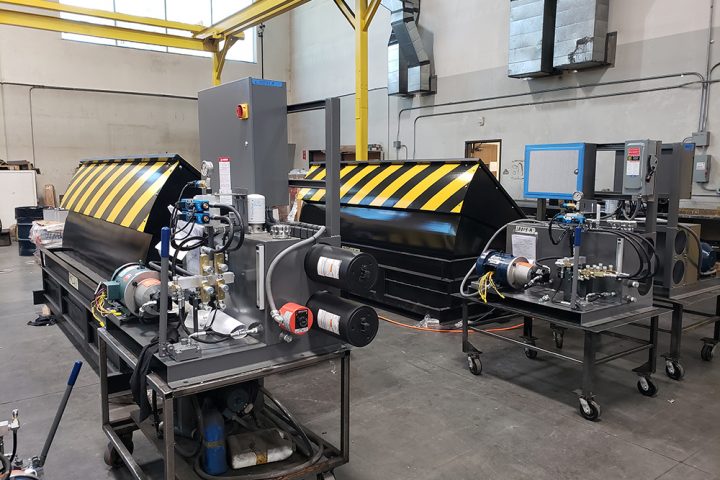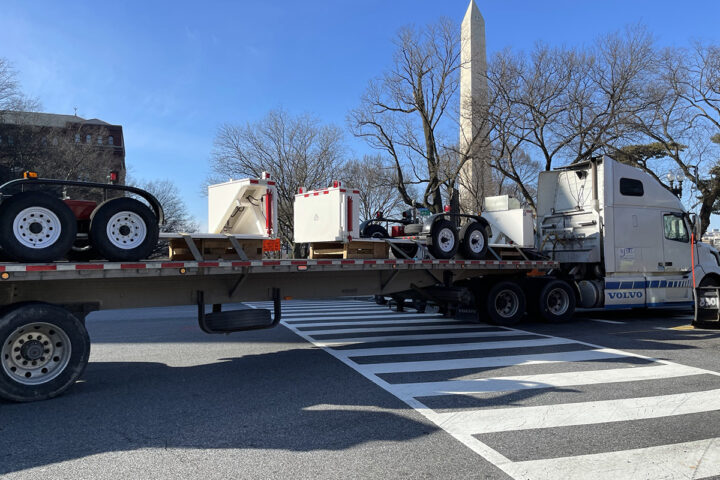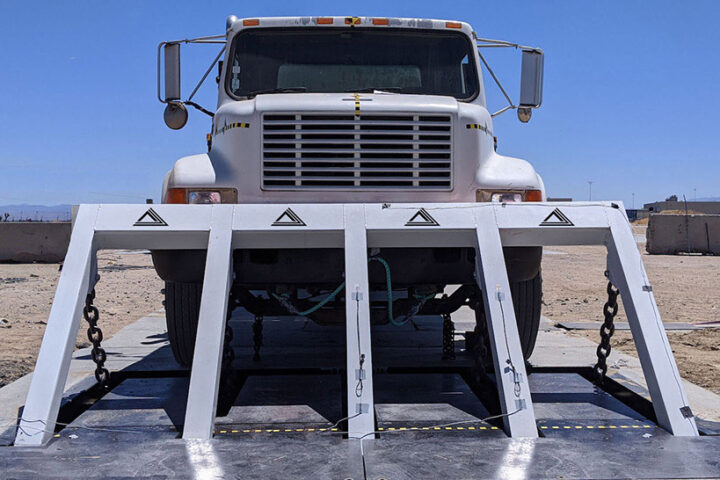Delta Scientific products are thoroughly tested and certified to meet or exceed standards set by ASTM International and the United States Department of Defense. We are confident in the level of protection that our products provide. Nevertheless, we realize that an off-the-shelf solution doesn’t always work for every individual situation, regardless of how effective it may be in general. Every barrier project we do involves our team of engineers, who are happy to address real-world challenges and work with our clients to devise a solution. Here are a few of the ways that you can benefit from taking advantage of custom engineering for your project.
A Look at Delta Scientific’s New Product: The Anti-Climb Pedestrian Door
Installing effective security infrastructure on your property involves a thorough risk assessment and deploying a comprehensive solution that takes all possible threats into consideration. For example, if your security solution only addresses the threat of vehicular attack and disregards the risk associated with pedestrian trespassers, you may be leaving yourself unnecessarily vulnerable to breaches by unauthorized personnel on foot.
The Future of Outdoor Dining After the Pandemic
Designing a secure location can be a challenge, but having to do so in the midst of a bustling metropolis poses even bigger issues. Along with needing to keep the building and its occupants safe from vehicular and personal intrusion, architects will also have to keep the local population in mind. While redesigning and adding to their second corporate headquarters, these are exactly the problems Amazon has to face in Arlington, VA. Fortunately, the company has an excellent model that integrates state-of-the-art security with a park-like landscape.
How Crash-Rated Barriers From Delta Scientific Provide Security and Peace of Mind
It has been over 25 years since the attack on the Murrah Federal Building in Oklahoma City, one of the most significant terrorist attacks involving a vehicle up to that point. The world seems more dangerous now in many ways. News stories about terrorists weaponizing vehicles by driving them at high speeds into pedestrian areas as outdoor events are becoming more commonplace.
How Delta Scientific Products Enhance Stadium Security
Stadiums and arenas are entertainment venues that can hold thousands of people at one time. They most often host sporting competitions, but they are sometimes also the sites of other events, such as concerts. Gatherings of so many people make stadiums soft targets for violence and terrorism. Fortunately, Delta Scientific has a wide range of products that can help to enhance the security arenas or stadiums.
The ABCs of Security in Private Enterprises
The need for security measures in public places, such as government buildings and military installations, is obvious. If it wasn’t obvious before, it should be after the assault on our national capital early this year. Private enterprises’ need for security is not always as obvious but is just as pressing, This is especially true of buildings and complexes that see a great deal of traffic on a daily basis. If it is a mix of both foot and motor vehicle traffic, the need is even greater. Here is a summary of security issues at various points in the private sector, as well as solutions that we offer at Delta Scientific.
Lessons Learned From Capitol Insurrection
In October 2020, the United States Department of Homeland Security identified domestic terrorism and violent extremism as one of the most significant threats facing the nation. The FBI warns that it is the foremost terrorism threat of 2021. On January 6th, we all watched in horror as violent domestic extremists stormed the U.S. Capitol in Washington, D.C., while both houses of Congress were in session.
SAFETY Act Certification and Why It Matters to You
Active and passive barriers from Delta Scientific provide protection from high-speed vehicle attack. Because the protection they offer is so consistent, 16 of our products, including bollards, barricades, and crash gates, have received SAFETY Act Certification from the Department of Homeland Security. Essentially, this means that our products not only provide you physical security but legal protection as well.
Delta Scientific Barrier Stops Intruder at U.S./Mexican Border
Delta’s TT218EC Manual Beam Prevented Intruder from Crossing San Ysidro Port of Entry from Tijuana. On the afternoon of December 22, 2020 a Hyundai sedan struck a Delta Scientific TT218EC manual beam vehicle access barrier on the American side of the border and was instantly stopped.
Spotlight on Our New DSC550 Shallow Foundation Barricade
At Delta Scientific, we understand the challenges of implementing an adequate security barricade in the presence of such obstacles. That’s why we have offered portable and shallow foundation barricades for some time. We are excited to introduce our newest shallow foundation barricade, the DSC550. It has a number of qualities that make it a viable security solution for your facility.










